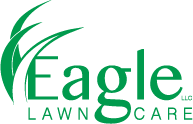Our Process
Lawn treatments may not seem that important, but they play an essential role in getting your lawn back in shape each year. With the highly unpredictable weather here in southeastern Pennsylvania, it can be tricky to know exactly what treatments your lawn will need at the beginning of each season. Having a dedicated team of lawn treatment pros means you can rest easy knowing your lawn is getting exactly what it needs every few months! Here’s an overview of the 3-4-step process for our recommended annual lawn treatment in eastern Lancaster and western Chester counties.

Early Spring (March-May)
We start our first lawn treatment by applying fertilizer, a pre-emergent crabgrass preventer, and lawn food as needed in early spring when it is the right time. This lawn treatment combination provides about three months of crabgrass control while supplying the necessary nutrients that a healthy lawn needs. It includes about 25% organic fertilizer in this application.

Late Spring (May-June; Optional)
On the second lawn treatment, we focus on crabgrass control and fertilization for nourishing your lawn. Spring is a good start with weed prevention, as using weed control early stops weed seeds from germinating and prevents headaches later. Many of our clients opt for this application, although it is optional and will only be performed at your request. This treatment includes the second half of a split crabgrass control treatment that gives some extra coverage. If needed, this lawn treatment will be provided between late spring and early summer.

Summer (June-Aug.)
Our third lawn treatment application focuses on grub and insect control. Typically, summer is the best time to do insect control lawn treatments for pests like fleas, ticks, and others that can harm your lawn. Especially, It is important to control ticks because they are known carriers of serious diseases. It is essential to protect you, your family, and your pets. This application also includes fertilization and weed control as needed. Fertilizer elements applied during this lawn treatment may include iron and sulfur, which contribute to a healthy, beautiful lawn. Spot treatment for yellow nutsedge will be provided as well.

Fall (Sep.-Dec.)
The final lawn treatment application is applied in the fall, between September-November. This fall lawn care includes fertilizer because it is the best time to fertilize the lawn. It goes to the roots rather than to top growth. And Additionally, post-emergent weed control will be provided for pesky plants like dandelions and clover. This fall lawn care is as important as early spring since it will prepare your lawn for the cold season and keep your lawn in great shape for the next spring. Plus, it can reduce disease, weeds, and dryness in your lawn.

Yellow Nutsedge (June-Aug.; Optional)
Additionally, we offer a specific lawn treatment for controlling yellow nutsedge. It is not part of our 3-4-Step Standard Lawn Treatment Application. It is optional and is available by request based on your needs. This application is a follow-up to the spot treatment done for nutsedge earlier in June. Because the first treatment may not eliminate it through the whole.

